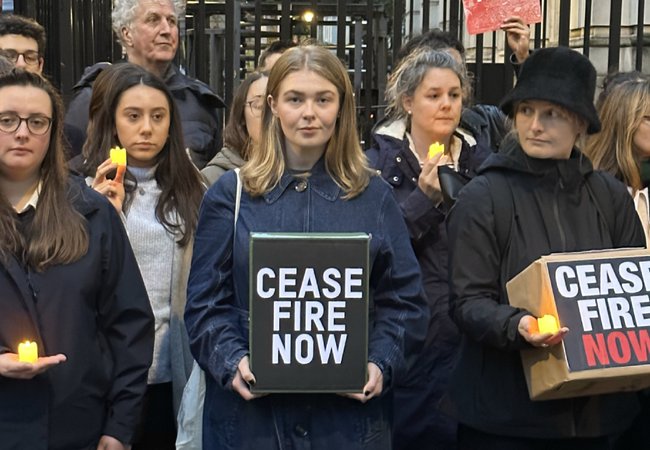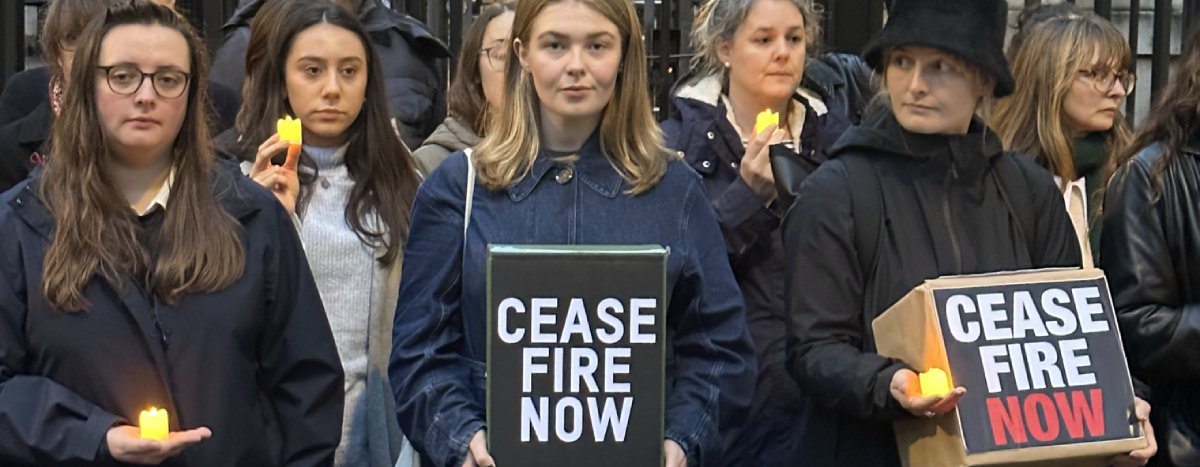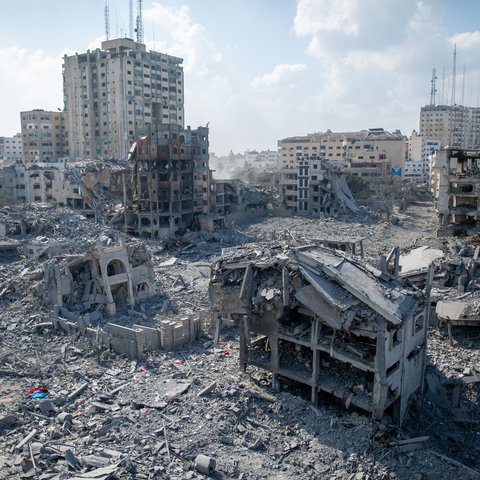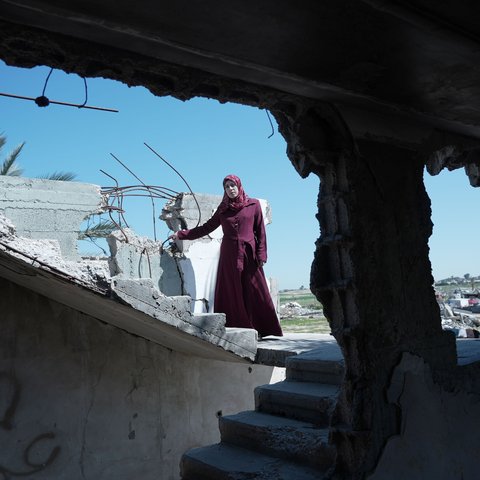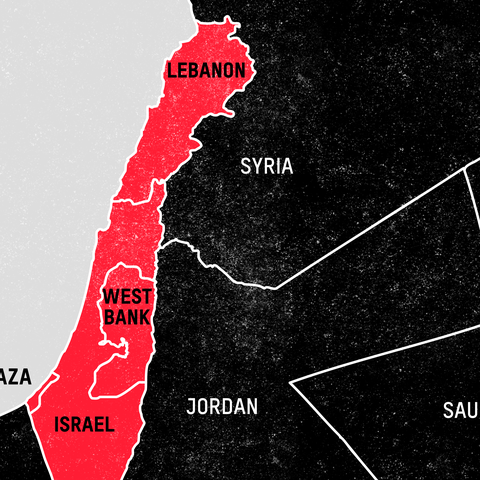A safe zone is an area (as opposed to a route above) that those involved agree is off limits to attacks.
Sometimes external groups may oversee security in a safe zone. For example, some of the demilitarised zones in Syria were controlled by the Turkish Army; in other places UN peacekeepers have overseen the security of these. Armed groups or government forces may be in the zone but they are not supposed to conduct any fighting in it. Even a “demilitarized” safe zone, does not mean there will be no armed groups.
So why do Oxfam and other agencies argue so strongly that a full ceasefire is the only real solution?
Here are four big problems with pauses, corridors and safe zones.
1. International law means we shouldn’t need pauses or corridors in the first place
A key point to understand is that we should not need humanitarian corridors, safe zones or ‘pauses’ in fighting simply to get life-saving aid to and protect civilians.
That’s because international humanitarian law makes it illegal to target civilians, or deny humanitarian relief supplies including food, medicines or water. It is also illegal to destroy what are called ‘objects indispensable to the survival’ of civilians such as food warehouses, food trucks or water networks. The creation of safe zones cannot be used to label everything else a legitimate target.
Gaza, the West Bank and East Jerusalem are recognised as an occupied territory by the UK government, EU, and UN including the International Court of Justice. Israel is what is known as an ‘Occupying Power’ under international humanitarian law and therefore unlike Egypt has a legal obligation to ensure the welfare of the population in Gaza including the provision of relief supplies. That means, if the rules of war were followed, civilians would be protected and supplies available throughout Gaza. Using the Israeli crossings into Gaza, Erez and Kerem, Shalom could allow hundreds of truckloads to cross each day, along with thousands of people.
2. Corridors and pauses are fragile and often ignored
Examples of humanitarian corridors that have been declared include in Ukraine and Syria in recent years. In Ukraine, civilians were allowed to flee a steel works in Mariupol.
But very often corridors are often called for but not implemented or agreed. For example , President Putin claimed attacks into Damascus stopped the implementation of a humanitarian corridor in Ghouta in Syria.
There are also no specific laws governing humanitarian corridors or safe zones: they are voluntary agreements. Sometimes declarations are made by just one side, or established with minimal standards, and are therefore extremely fragile. Different sides may declare or agree that an area is de-militarised but so often the corridors and safe zones are not respected by those fighting in a war, putting civilians and humanitarian workers at risk.
3. They may even put civilians at greater risk
Oxfam’s experience in conflicts around the world is that these measures can sometimes put civilians at greater risk.
In wars, civilians and soldiers alike are often unable to access credible information. Rumours and misinformation spread that this road or that “safe zone” has been declared a demilitarised area, but that is often not true, leaving people walking into a warzone believing it is safe.
Governments and armed groups may take advantage of corridors to move personnel or military supplies actually fuelling the conflict. Armed groups or governments may hide troops/combatants among civilians in supposed safe zones. Sometimes a corridor may be declared for a particular time period but when this expires, again civilians can be confused and end up caught in the violence.
4. History makes Palestinians in particular fear talk of safe zones and corridors
Palestinians have a history of being displaced since Israel was founded in 1948.
Many Palestinians were forced to flee their homes to other countries or the West Bank or Gaza.
Then in subsequent wars in 1967 and 1973 many Palestinians were forced to move again.
Palestinians in Gaza fear that talk of forcing them into humanitarian corridors and safe zones are really an attempt to remove them permanently from their land to a new location, as has happened throughout their history – and in particular push them into Egypt.
